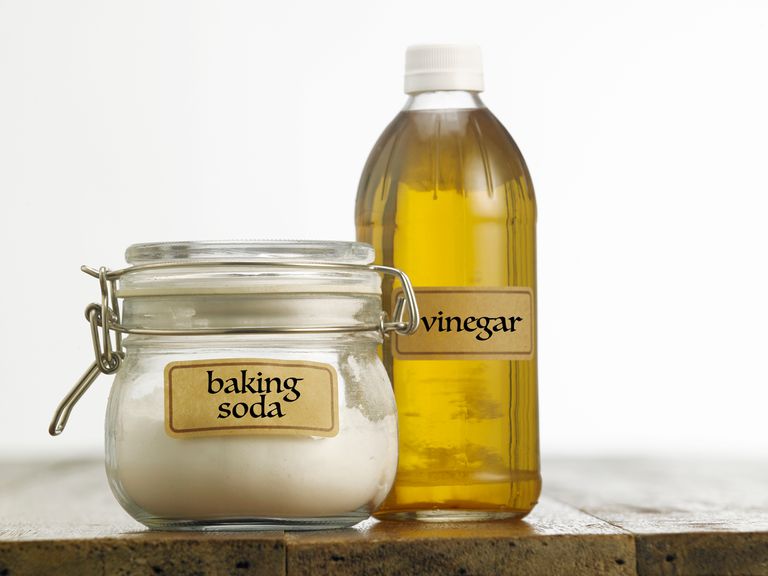Removing mold from your carpet can be a tough task. Let us simplify it for you.
Your home is your haven, and you are proud of your constant dedication to keeping it clean. You have a checklist and a go-to cleaning solution for everything. But what do you do after you have been hit with a leaky ceiling or a plumbing issue, and all of a sudden you discover a stain on your carpet that you hadn't noticed before?
Mold growing in your home can easily go undetected. Knowing what triggers mold growth and what steps you can take to prevent it is something every homeowner should know. Removing mold from easily accessible areas like counters or bathrooms may only take a simple cleaning spray, but eliminating mold from a multilayered surface such as carpet requires a more thorough, deep clean. To understand how to remove mold, you first need to understand what mold is and how it develops.
- How Problematic Can Mold Be On Your Health
- How Does Mold Grow On Carpet
- Steps To Remove Mold From Carpet
- Steps To Prevent Mold Forming In Carpet
How Problematic Can Mold Be On Your Health?
Mold spores are tiny structures naturally found in the air. They are attracted to and rely on moist conditions to thrive. They also have no problem finding their way into your home. They can travel through doors, windows, heating and cooling systems, or even hitch a ride on your clothes or pets. Once they have found a conducive environment, such as your carpet, and have combined with the dust in your home, the perfect condition has been created for mold to grow.
Mold spores will exist in your home air in some capacity. They’re everywhere and not really harmful at low levels. The key to successfully "managing" mold spores is keeping it from collecting in large numbers. (That's when you actually get a mold problem.) To do this, one must deprive the spores of moisture, cellulose, and time.
When left untreated, mold can impact your health in several ways. According to the EPA, it releases allergens and can even release toxic substances, called Mycotoxins. If touched or inhaled, it can result in throat, skin, and eye irritation, as well as coughing and a stuffy nose. In more severe cases, when coupled with a weakened immune system, mold inhalation can even cause respiratory infections or bronchitis, as well as exacerbate symptoms in asthma sufferers.
How Does Mold Grow On Carpet?
Carpet is the perfect environment to trap and hide mold. This is especially true in especially wet areas such as your bathroom or basement. The thick, woven material, along with the carpet's backing, can easily absorb and retain moisture for an excessive amount of time. Carpet offers a complex structure comprised of many cellulose-based products. Wet carpet is mold’s dreamworld, so if it becomes moist, it creates that perfect environment needed for mold growth. Mold spores landing on the carpet use the moisture and cellulose to begin their germination process and are well on their path to becoming mold. Leaks, flooding, or even carpet that was cleaned but not thoroughly dried can result in mold growth.
Although mold only takes a couple of days to grow, it may take up to three weeks to become visible and may not even reach the carpet's surface. Mold is likely to develop and fester under the carpet's surface, making it undetectable. Oftentimes, once it has become visible, it has reached a point of severity where the carpet is no longer salvageable. Eventually, mold left untreated can even end up damaging the baseboards beneath your carpet. Although catching mold before it has become visible is difficult, it is not impossible. If you notice your carpet is damp, or that a musty smell has developed, it may be time to unveil a portion of your carpet and do some further investigation. Any case of discoloration or odor on your carpet's surface that seems to be mildew-like might be a sign that mold is present. It is crucial that any moisture detected on your carpet is addressed within 24 to 48 hours before it has a chance to fully develop into mold.
Steps To Remove Mold From Carpet.
Once you have diagnosed your carpet with mold, it is essential you act immediately. Be sure to keep the area cut off from the rest of your home. Mold can quickly and easily spread, turning a small issue into a significant project—and not the fun kind of project. There are two approaches to cleaning mold from your carpet. You can use natural products, or you can attack the area with stronger chemicals. Before handling any potentially moldy areas in your home, it is vitally important that you protect your face and hands. Face masks and gloves will go a long way in ensuring that the mold and cleaning chemicals do not affect your health.
It is equally important to note that you should not mix cleaning solutions unless otherwise specified, as this can create toxic fumes that would be hazardous to your health.

An age-old remedy to removing mold from carpet is to apply baking soda, leaving it overnight to treat the affected area, absorbing moisture and bad odors. Something as simple as baking soda is actually the best mold remover in many circumstances. Vacuum the next day and proceed to scrub with vinegar using a stiff bristle brush. A vacuum with a HEPA filter will help collect remaining mold spores, but the vacuum's filter will need to be changed before next use, or you will be at risk of spreading these spores to other areas of your house, contaminating it once again. If your vacuum does not have a HEPA filter, it is recommended to substitute this step with a broom and dustpan. The carpet then needs to be dried as quickly as possible. You can do so by ventilating the room with open windows and running your A/C. Extra fans or dehumidifiers are also helpful to expedite this drying process.
Vacuums without high-grade filtration will send mold spores back into your air, leaving them free to float around and land somewhere else they find suitable to colonize.
A more aggressive approach to removing mold is to use a solution made for just that. Mold-removing products, like Allersearch ADMS Anti-Allergen Spray, can be found at your local hardware store. It is essential that the excess spray is removed using a brush, discarding the mold that you scrape out into a trash bag. Using water will only increase the risk of mold returning. After scrubbing, continue to dry the carpet using the same process recommended for the natural mold removal approach. If you are cleaning mold from a rug, opt to dry the rug outside in direct sunlight for 48 hours, as this will reduce the risk of mold returning. These tips apply to all the rugs in your home that may have fallen victim to mold growth.
UV rays from the sun can actually help to kill mold spores.
Of course, if mold has spread to a larger than manageable area, it may be best to seek help from a professional. Although mold remediation is expensive, costing upwards of $2,000, you can be sure the affected areas will be properly treated. As important as it is to treat mold, it is equally important to determine the underlying cause of the mold's growth and to resolve that issue simultaneously. Mold due to flooding, a leak in the roof, or an unsealed crawlspace will come back if those problems are not treated immediately.
Steps To Prevent Mold Forming In Carpet.
Routine is key to preventing mold from forming in your carpet. Having a weekly regimen in place will help you stay proactive in the constant fight to keep your home a healthy one. Below are some tips that will keep you one step ahead of mold:
- Regularly use a dehumidifier in areas prone to higher humidity to help keep moisture levels from reaching a point where mold spores need to grow. Anywhere from 30% to 50% humidity is normal for the inside of your home. It is important to check humidity levels frequently as they can change throughout the day. A/C units can also help manage humidity in your home.
- Keep your home well ventilated by opening windows. This is an easy way to reduce moisture in your home.
- Vacuuming often will help keep the dust that accompanies mold at bay. Steam clean any wet areas as this will help remove any toxins found in your carpet.
- Do not install carpet in areas where moisture is often present. Clean rugs in bathrooms or basements often.
- Do your homework when installing carpet. Be sure to choose moisture resistant padding and check that it is installed correctly.
- Regularly replace your home air filters with ones that guarantee they filter out allergens such as dust and mold.

Mold can be scary, but removing it from your home is pretty easy. Remember, as your mother always said, "A healthy home is a happy home," and "Prevention is the best medicine." And if she didn't say that, I'm sure she was still a great mom.
Topics:


